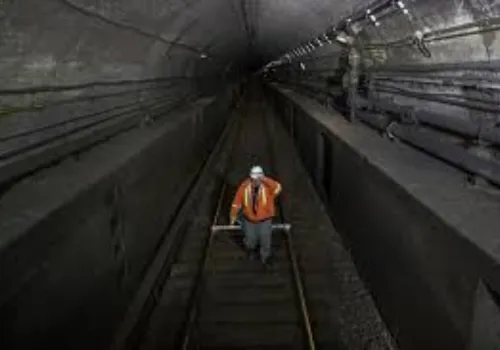
What looks like a regular stretch of U.S. 1 and 9 in North Bergen, New Jersey, is actually the beginning of a massive infrastructure project — the Gateway Tunnel — that will transform rail travel between New York and New Jersey for generations.

“We’re building an underpass so that the tunnel boring machines can actively go back and forth underneath Tonnelle Avenue,” explained John Schweppenheiser, construction manager with Niak Consulting, one of many contractors making this decades-long vision a reality.
The underpass is part of just one of 10 construction sites tied to the Gateway Tunnel Project. Of these, five are currently active, with two more sections already finished under Hudson Yards and one under the Hudson River. The Gateway Program Development Commission secured the final piece of its $16 billion federal funding package just last year — a milestone that finally unlocked full-scale construction.
“This is money from New York. It represents, you know, people’s livelihood,” said Tom Prendergast, former MTA Chair and CEO, who is now overseeing the effort. “But the most important thing is it’s a project that is going to increase the reliability of the service into Penn Station from New Jersey. Actually, the entire station.”
.avif)
Building the tunnel demands complex coordination and constant engineering feats. In North Bergen, the tunnel boring machines will head through the Jersey Palisades next year, connecting with shafts in Weehawken that will launch more machines beneath the Hudson River.
Workers face unusual challenges every step of the way — from boring through soft riverbed soil using frozen ground techniques, to stabilizing the Manhattan bulkhead, which sits on decades-old landfill.
“They’ll circulate cold brine through these pipes to freeze the ground, to create a hardened mass,” said Benjamin Engle, senior program manager for Program Planning at the Gateway Development Commission. “They’ll excavate the material. They’ll remove obstructions that are within Route 9A, 12th Avenue, including the former foundations, steel foundations of the West Side Highway that were abandoned in place when they tore the highway down.”
Meanwhile, on Manhattan’s west side, construction teams navigate around active rail lines, major utilities, and the Long Island Rail Road substation that powers the entire West Side storage yard.
“We had to support the Long Island Rail Road substation, which supplies all of the power for the West Side storage yard, which is a major key hub for MTA Long Island Rail Road,” said Leroy Antoine, project manager for Hudson Yards Concrete Casing 3. “We have several instrumentation and monitoring points all throughout the site.”
Even the iconic High Line had to be carefully underpinned to allow tunneling underneath.
“We had to underpin the High Line,” Antoine said. “Which is, essentially, support the High Line while we dug underneath it.”
This phase of the Hudson Yards portion is expected to wrap up by the end of 2026. The entire Gateway Tunnel, if all goes to plan, will open for service in 2035.
When complete, the Gateway Tunnel will double rail capacity under the Hudson River — a critical link for Amtrak and New Jersey Transit riders who face constant bottlenecks due to aging infrastructure.
Crews must carefully stage work around active roads like Tonnelle Avenue — the busiest non-tolled road in New Jersey — while minimizing disruptions to traffic and local communities.
With more than $16 billion in investment and the backing of multiple states, transit agencies and federal partners, the Gateway Tunnel is one of the nation’s largest and most high-stakes infrastructure undertakings.
While the massive project will take another decade to finish, each milestone brings the region closer to more reliable daily commutes and a stronger, future-ready Northeast Corridor.
Originally reported by Samantha Liebman in NY 1.